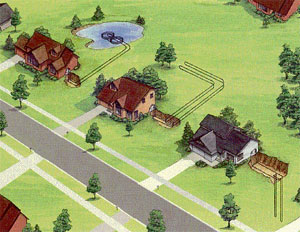
A geoexchange heating and cooling system uses the consistent temperature of the earth to provide heating, cooling, and hot water for both residential and commercial buildings.
Water is circulated through polyethelene pipes in closed loops that are installed at a minimum of 5 feet below the earth's surface. These loops can be buried vertically or horizontally in the ground, or submersed in a pond. The loops are connected to an extended-range water source heat pump installed in your home or commercial property.
When heating the home or hot water, heat is extracted from the earth into the water circulating in the loop. This heat is used by the heat exchanger and compressor in the water source heat pump to warm the air and provide hot water. Cold air or chilled water is provided as a result of transferring heat from the conditioned space and rejecting it into the earth.
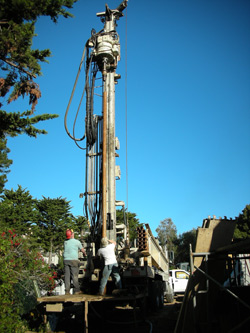 In size, a water source heat pump is similar to a standard furnace. A complete geoexchange system, consisting of the water source heat pump, the loop, and a standard duct system for delivery of hot or cold air, provides all the heating, cooling, and hot water needed for your home in one integrated system. You can expect your geoexchange system to provide safe, clean, and efficient heating and cooling service for up to 30 years, up to twice the life expectancy of other heating systems available today.
In size, a water source heat pump is similar to a standard furnace. A complete geoexchange system, consisting of the water source heat pump, the loop, and a standard duct system for delivery of hot or cold air, provides all the heating, cooling, and hot water needed for your home in one integrated system. You can expect your geoexchange system to provide safe, clean, and efficient heating and cooling service for up to 30 years, up to twice the life expectancy of other heating systems available today.
Geoexchange systems work well in any climate zone, from Pacific coastal regions to the Sierra Mountains, and all areas in between. Used as early as the 1920s in Europe, geoexchange systems have been installed throughout North America for the last 30 years. The EPA lists geoexchange systems as the most environmentally friendly and efficient systems available today.
Geoexchange systems do not require geothermal geysers, hot water from subsurface volcanic activity, or any other existing hot water source from the earth. Nor do they require natural gas or propane.
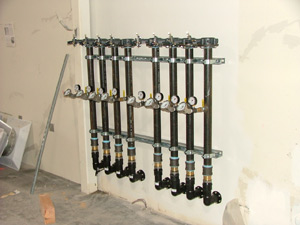
A single geoexchange water source heat pump provides heating, air conditioning, and hot water for your home or business. Heating can be provided in two ways: as forced warm air with a two-stage capacity variable-speed fan for precise comfort control, or as hot water for an in-floor radiant heating system. Air conditioning is delivered as cooled air through your duct system. Chilled water can be provided for commercial applications. The geoexchange water source heat pump can also be used to provide hot water for your home, pool, and spa.
There are several types of loops that can be used depending on soil conditions, how much space is available, and if a pond is available. Loops fit into two basic categories: ground loops and pond loops. When properly designed and installed, all loops are equally efficient.
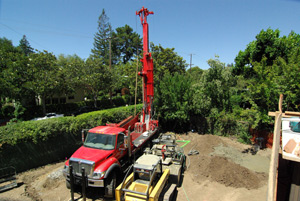
Ground loops are buried in the earth and can be installed in the ground horizontally or vertically. Horizontal loop types include 4-pipe, 6-pipe, and horizontal slinky. Vertical loops include 2-pipe and vertical slinky. In both cases, the number of pipes and their length is determined by the heating and cooling requirements of the building. Slinky loops are coils instead of straight pipe and are advantageous in very moist soil conditions.
Pond loops are a series of coiled pipes which are submersed in the water. Pond loops typically cost less to install than ground loops. A sufficient volume of water is required for a geoexchange application and varies depending on the specific project.
Geoexchange systems require a smaller amount of refrigerant than a conventional system. They are non-polluting and have no exhaust emissions and are more efficient; they use less power than conventional systems. Geoexchange systems generate no outdoor noise unlike conventional air conditioners and heat pumps.
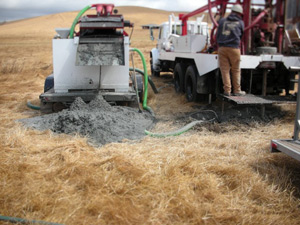
Thermal conductivity testing, also known as “insitu testing,” is done for vertical loop installations for commercial buildings. A bore hole that can be used for the future ground loop is installed with polyethelene pipe and grout. A controlled test measuring time, water flow, and rejected heat is conducted for a period of 36-48 hours. The data is recorded and the results are analyzed to help determine the final design of the ground loop including the pipe length and size, number of bore holes, spacing of bore holes, and the type of grout to be used.
Air Connection provides thermal conductivity tests for their own projects as well as providing this service to anybody considering designing a geoexchange system.